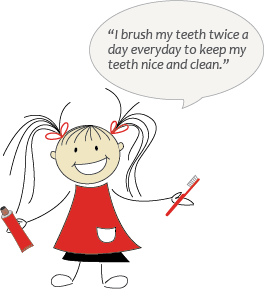Tooth Whitening
Tooth bleaching or whitening has been marketed heavily through the print and visual media. This, unfortunately, has led to disappointment from patients who later discover that they are not suitable candidates for bleaching or the final result has not lived up to their expectations,
Does it work?
Yes, bleaching techniques will whiten or lighten dental enamel.
Are there different types of bleaching?
Today, when people are talking about tooth whitening or bleaching, they are referring to techniques that treat smiles (groups of teeth). This can occur in the dental office or by the patient at home with materials supplied by the dental clinic. The procedure of bleaching individual root filed teeth is a separate technique and will not be discussed here.
How does it work?
With all the techniques, a bleaching agent (a cream, paste or gel) is applied to the dental enamel surface. This can be done by the dentist in their rooms or by the patient at home. A suitable tray is usually provided to hold and contain the bleaching agent. The agent breaks down to release peroxide based molecules the can be absorbed by the enamel and remove products that stain or colour the enamel. The resulting dental enamel looks whiter. Please note - the tooth root material (dentine) is not affected in the same way as enamel and does not whiten.
Does it hurt?
Dental enamel has no nerve fibres within its structure, so the procedure is painless. However (as noted above), the tooth root material (dentine) responds differently to the bleaching agents. It hyper-cleans the dentine surface, opening up the fine tubules that house cells from the dental pulp (nerve). The result of this can be cold sensitivity and it can be extreme in some patients.
This can be controlled by careful application of the bleaching agents. This is best achieved by a careful bleaching tray design that keeps the agent away from the dentine and gums. Use of de-sensitising toothpastes during a course of bleaching is recommended.
Who is suitable?
Bleaching will whiten the enamel of your teeth. It will not whiten or bleach dental restorations (e.g. tooth coloured fillings) or the porcelain on a crown/veneer. Thus, if the dark areas between your teeth are older discoloured fillings, bleaching will not whiten these areas.
Also - bleaching can not alter the shape or position of your teeth or improve the colour of inflamed, unhealthy gums. In all cases, your teeth and gums must be healthy before bleaching begins. So - if you are happy with the look of your smile but would just like it to be whiter, tooth bleaching maybe for you.
What will work best for me?
As everyone is an individual, your case is best assessed by your dentist and treatment options reviewed. At our practice, many people have very pleased with the results that have been obtained by bleaching. In cases when bleaching has not been a suitable option, alternatives have been offered. Many happy patients now have beautiful smiles because the correct course of treatment was offered and accepted.
At DentalArt - we like to provide options and treatments that will provide the best outcome for you.


